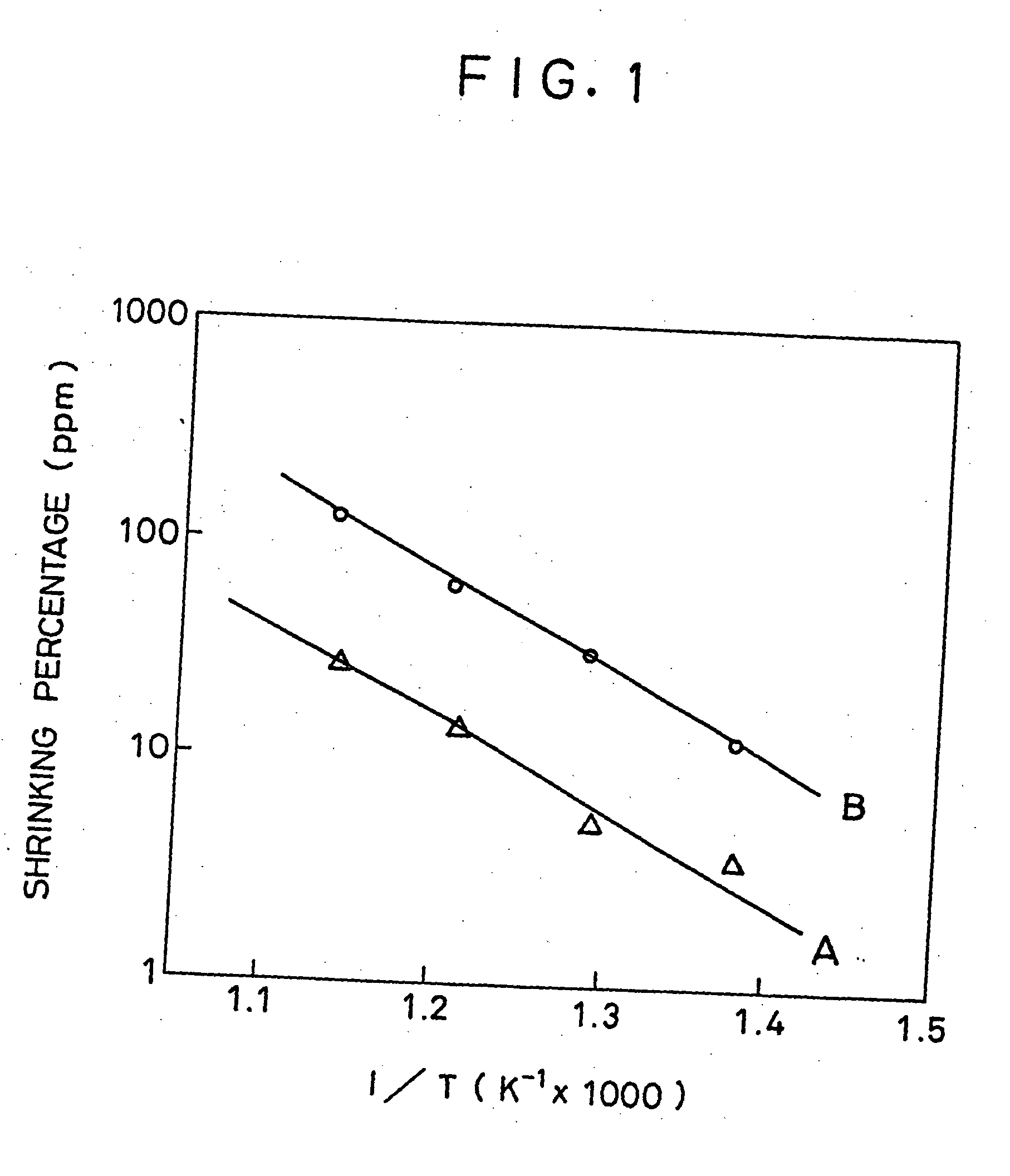Method for manufacturing a semconductor device
a manufacturing method and semiconductor technology, applied in the direction of semiconductor devices, basic electric elements, electrical equipment, etc., can solve the problems of difficult to achieve mask alignment in the subsequent process, poor electrical properties of the semiconductor layer, etc., and achieve the effect of high performan
- Summary
- Abstract
- Description
- Claims
- Application Information
AI Technical Summary
Benefits of technology
Problems solved by technology
Method used
Image
Examples
first embodiment
[0035] Glass substrates A (AN-2 non-alkali glass) which had been heated in advance in the same manner as in the first embodiment were prepared. Also, glass substrates B (AN-2 non-alkali glass) which had never been heated were prepared. First, volume of each substrate was measured at room temperature (the volume obtained is referred to as V1). Then these glass substrates were heated at various temperatures for 12 hours. After the heating process, volume of each substrate was measured again at room temperature (the volume obtained is referred to as V2). Then, shrinking percentage of each substrate was calculated by the volume V1 and the volume V2 of each substrate. Relationship between the shrinking percentages of the heated glass substrates A and the temperatures is shown by line A in FIG. 1, while that in the case of the glass substrates B is shown by line B. As apparent from FIG. 1, the shrinking percentages of the glass substrates A heated in advance are ⅕ or less of those of the ...
second embodiment
[0042] Referring next to FIGS. 4(A) through 4(E), manufacture of a polycrystal silicon thin film transistor will be described in accordance with the present invention.
[0043] A glass substrate (AN-2 non-alkali glass) 1 was heated at 610° C. for 12 hours in an electrical furnace. This heating was carried out in an inactive gas atmosphere, e.g. N2, under an atmospheric pressure. It may be done in an inactive gas atmosphere involving an additive of hydrogen under an atmospheric pressure or a reduced pressure, instead.
[0044] On the glass substrate 1, a silicon compound layer 2, e.g. SiO2 layer, was formed to be 200 nm thick by RF sputtering method. The formation was carried out under conditions of a pressure of 0.5 Pa, a temperature of 100° C., an RF frequency of 13.56 MHz, and an RF output power of 400 W.
[0045] Then, an amorphous silicon activation layer 3 was formed to be 100 nm thick on the silicon compound layer by RF sputtering. In this case, the formation was carried out under a ...
third embodiment
[0053] In accordance with the present invention, formation of a semiconductor layer on a substrate will be described hereinafter.
[0054] An AN-2 non-alkali glass whose strain point is 616° C., was utilized as a substrate. This glass substrate was heated at 610° C. for 12 hours in an electrical furnace. This heating process was carried out in an inactive gas atmosphere, e.g. N2, involving hydrogen at 50% under an atmospheric pressure. Then a silicon compound layer, e.g. SiO2 layer, was formed to be 200 nm thick by magnetron RF sputtering, and subsequently an amorphous silicon layer was formed thereon to be 100 nm thick by means of a magnetron RF sputtering apparatus in an atmosphere of a hydrogen partial pressure of 0.75 mTorr and an argon partial pressure of 3.00 mTorr at an RF power of 400 W, utilizing a target made of silicon. Then the amorphous silicon layer was crystallized by heat at 600° C. for 96 hours.
[0055] Shrinking percentages of glass substrates D which had been heated i...
PUM
| Property | Measurement | Unit |
|---|---|---|
| temperature | aaaaa | aaaaa |
| strain point | aaaaa | aaaaa |
| viscosity | aaaaa | aaaaa |
Abstract
Description
Claims
Application Information
 Login to View More
Login to View More - R&D
- Intellectual Property
- Life Sciences
- Materials
- Tech Scout
- Unparalleled Data Quality
- Higher Quality Content
- 60% Fewer Hallucinations
Browse by: Latest US Patents, China's latest patents, Technical Efficacy Thesaurus, Application Domain, Technology Topic, Popular Technical Reports.
© 2025 PatSnap. All rights reserved.Legal|Privacy policy|Modern Slavery Act Transparency Statement|Sitemap|About US| Contact US: help@patsnap.com



